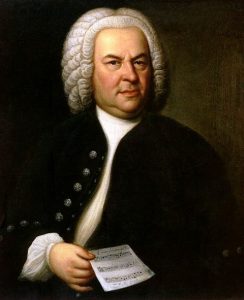As I continue to practice for a 24-hour marathon of all the extant organ compositions of J. S. Bach, I find myself studying Bach’s non-organ works, especially the cantatas. The diversity of forms, styles, textures, etc., in these choruses, recitatives, arias, and chorales, is, indeed, remarkable. My questions about phrasing, articulation, tempo, and registration can all be answered by studying Bach’s vocal and instrumental writing.

For example, Bach’s frequent use of woodwinds as accompaniment in vocal compositions leads me to use the organ’s reed stops as accompaniment in chorale preludes; and the sounds which I enjoy while listening to informed “period” instrumental performances brings me to a much broader palette of articulations and phrasings for the organ. I am fortunate to have a harpsichord that also helps my fingers and ears to shape notes in ways which my two non-mechanical actions organs do not inspire. I appreciate opportunities to practice and perform on fine mechanical action instruments and any organ which has beautiful voicing; these are qualities which inspire.
These 300 organ pieces span 50 years of Bach’s activity as a composer. I enjoy seeing how he developed and matured and the various influences on his work. There are small, early pieces which are rarely performed, but even in these do I find the genius and divinely inspired music of this great man. People ask which are my favorites: they all are!
Please join me in Olympia on Bach’s birthday, Tuesday, March 21, when I will play from midnight to midnight. Food service will be available throughout the day; plein air artists are encouraged to set up easels and work while being inspired by the music; and donations will be accepted to complete the installation of the 1967 Schlicker organ. Please visit the bacharoundtheclock.net website.
St. John’s Episcopal Church, 114 20th Avenue SE, Olympia 98501, 360-352-8527
